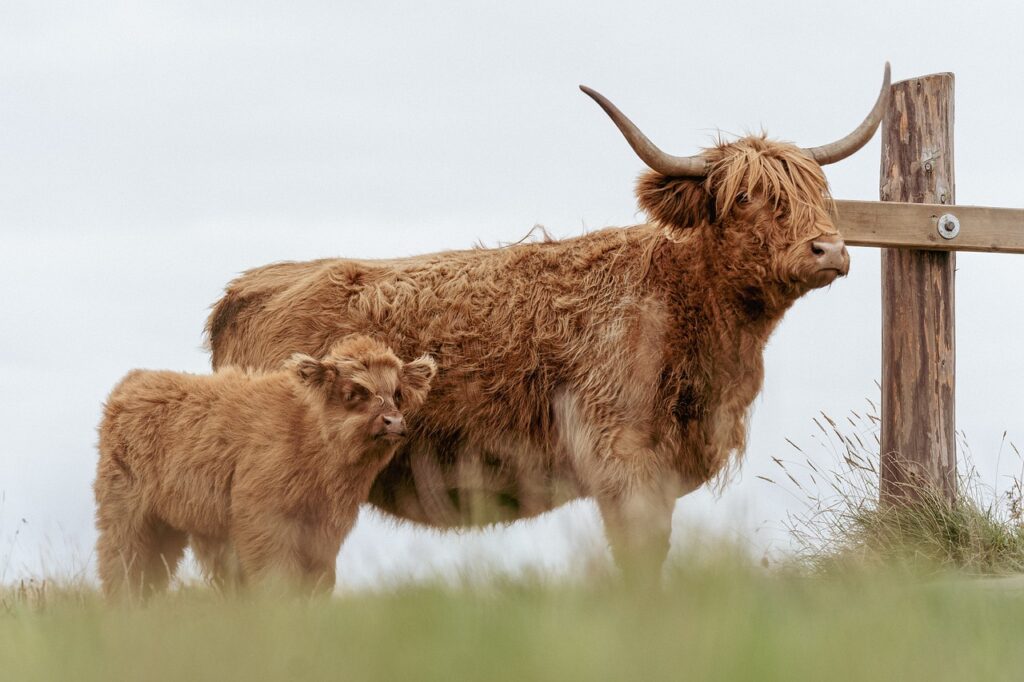Hello and welcome to this new section of Guide Blooness, the guide to the ideal diet. After having dealt with plants as a whole, as well as the benefits of proteins and the importance of choosing bioavailable proteinsIn the next few months, we will be compiling a list of all the best meats, animal and seafood products to be favored in low-carb, Mediterranean and more generally paleo and Blue Zones diets, for health, longevity, maintenance of muscle mass through age and return to or maintenance of a healthy, fit weight.
Table of contents
HideThe idea behind this guide has been the same from the outset: mimic ancestral eating habits in order to give the body what it is capable of metabolizingThis is based on the hypothesis that natural selection and metabolic adaptation took place over hundreds of thousands of years, and that the recent extremely rapid modernization of the food supply has not given the organism time to adapt to these new foodstuffs and production methods.
Podcast content
So the fact that we haven't had time to adapt to the recent changes in our diet could explain in part an increase in mild discomforts and so-called civilization diseases such as overweight, allergies, chronic inflammation, libido problems, reproductive problems, thyroid problems, type 2 diabetes, asthma, acne, or problems caused by the poor oxidation of carbohydrates, which are the main fuel almost non-stop in the modern, standard diet.
Based on the precautionary principleBased on the results of our research, as well as on observational statistical data, we were able to deduce that among the ancestral diets most "adapted" to our organism, we could find the paleo, ketogenic, keto-carnivore, Mediterranean and more generally the Blue Zone diets.
Some might criticize the fact that these eating habits are quite differentbut they have the merit of having at least one essential thing in commonis the predominance of raw and minimally processed products by the food industry. Assuming, of course, that the ketogenic diet - to name but one example - would be mainly from raw and natural productsThis is not always the case in practice.
This content is part of the guide Blooness, the guide to the ideal human diet, the summary of which you can find here 🌱🥑
The idea is to build bridges between these different eating stylesThis is based on the hypothesis that, depending on the seasons, geographical position, hunting and gathering, ancient human beings could just as easily go from one to the other. carnivores only at certain times at slightly more varied timeswith an increased presence of plants and oilseeds. In fact, humans are opportunistic omnivores, feeding on animal or plant foods as contingencies and opportunities dictate.
Archaeologists have already shown through their research how prehistoric man switched from meat to pine nuts to shellfish, depending on the season and the place where he lived.
French-speaking subscribers will receive the newsletter in French, and all others will receive an English version.
More later, the Neolithic revolution led to the advent of wheat, bread and cereals in generalThe advantages and disadvantages of excessive consumption have already been described in this guide. Especially since cereals of yesteryear, as we explained in the chapter devoted to them, had nothing in common with today's modern wheat.including consumption can be a problem for human beings.
We can therefore assume that the consumption of ancient grains in reasonable quantities may not pose any metabolic problems, in the same way as 20th-century human beings consumed them in various Mediterranean areas identified as Blue Zones. On the other hand, it can be hypothesized that legumes and root vegetables are a valuable and healthy source of carbohydrate-rich foods, and that they are the healthiest source of glucose for those wishing to incorporate carbohydrates into their diet. It remains to be seen in what proportions, depending on the dietary strategy chosen, and we'll come back to all this in the chapters of this guide.
In any case, we can envisage the hypothesis that it might be possible, like our ancestors, alternating periods of varying degrees of ketogenicity, in particular with carnivorous foods, and periods of varying degrees of carbohydrate intake with foods such as high-quality cereals or pseudocereals, as well as root vegetable or legumes, which can provide starch, and therefore glucose, in quantities that are largely acceptable, not to say beneficial.
This dietary alternation could then be carried out according to the seasons, desires and objectives, while taking advantage of the health and longevity benefits of this approach. as long as we more or less meet the following conditions:
- whether the food comes from raw and natural foods most of the time;
- by bringing protein and fat requirementswhich are the macronutrients essential for survival;
- by adopting an appropriate macronutrient distribution strategy ;
- And all this, of course, with a healthy lifestylea sufficient daylight exposureThese and other behaviors are among the hallmarks of both the ancestral and Mediterranean lifestyles we'll see in the content to come.
So, all this reasoning leads us to this new large section of the guide, devoted to meat, as we have seen in the previous chapters of the guide, the importance of foods that are sources of protein.
For the sake of clarity, we'll consider the term "meat" to encompass all foods derived from the following sources of land animals, which we'll deal with first. Marine animals, fish and crustaceans, will be dealt with in a second phase.
And so the question will be which meat-based foods are preferablealways under the spectrum of longevity, inflammation regulation, good lipid profile, protein content, etc...
In fact, a supermarket minced meat, whether it has 5 or 15% of fat, from unknown sources may not not necessarily the same impact on health that a specific piece of meat purchased from a special identified chain, and whose origin, rearing method and feed given to the animal are known.
These the way meat is produced are essential if you want to put protein back at the heart of your diet. Not in terms of quantity, as it is well understood that protein will represent between 15 and 35% of most people's intakes, with the exception of high-level athletes, but in terms of qualitybecause This is where the difference can be made in terms of health, inflammation, weight loss and longevity..
And when it comes to quality, we're not talking about the quality of the meat from a gastronomic point of view. Because some exceptional meats, mostly muscular, with an extremely pleasant taste and a high price tag, are not necessarily the meats to be preferred on a daily basis in terms of health, but rather to be reserved for moments of dedicated gustatory pleasure.
On the contrary, it's the meats that are shunned and have a reputation that's not necessarily attractive - and yet delicious - that could well be one of the key factors in the success of a new-found health. When it comes to increase fat intake in a ketogenic diet, for example, and even in an overall Mediterranean diet, it would be unreasonable to consume exclusively the same pieces of muscular meat vendues en supermarché, comme les steaks, les entrecôtes ou les bavettes de beef, ou encore les cuisses et filet de poulet.
It's true that these cuts are interesting to eat regularly, but not necessarily exclusively on a daily basis. They are, however, the only cuts you'll find in supermarkets, whereas there are a multitude of other cuts that are sometimes more advantageous both in terms of wallet and health, but which are little-known or have fallen into disuse.
Moreover, from an anthropological point of view, our ancestors ate animals from head to tailAt the very least, our grandparents had many more opportunities to consume parts of meat that are now completely ignored by the general public, such as offal, which includes liver, heart, kidneys, etc., as well as bone broth, which is rich in collagen. We know just how important these cuts of meat are in a ketogenic diet, without which it would be difficult to provide the body with the sufficient diversity of micronutrients it needs.
In this new part of the Blooness guide, we'll be looking at the meat cuts to choose from, as well as the animals themselves, the way they're raised, and their nutritional labels. In this way, we'll attempt to answer the questions related to meat selection. Because when it comes to food shopping, most people are lost and end up buying the same cuts of meat whose over-consumption may not be beneficial, and which also have limited satiating power, as they are generally very muscular meats and not lipid-rich enough.
Without further ado, discover the contents of this new part of the Blooness guide, which can be accessed simply by clicking on the links below. Please note that some of these chapters are reserved for to Blooness members.
- Meat in the keto-mediterranean diet (Contents)
- The difference between red meat, white meat and tripe
- The ultimate guide to organ meats for full health on a keto and Mediterranean diet. [MEMBER ZONE]
- Cattle, sheep, pigs: a guide to animal families and their characteristics
- Ruminant feed: from its origins to the changes made by man - [MEMBER ZONE]
- Chicken and health: from ancestral diet to intensive farming, the keys to quality white meat - [MEMBER ZONE]
- The best red meat channels for health, longevity and a healthy weight - [MEMBER ZONE]
- White meat and health: which channels and labels are best for optimal nutrition? - [MEMBER ZONE]
- The best cuts of beef in keto, carnivore and paleo for health and longevity - [MEMBER ZONE]
Coming soon:
- The best meat labels, chains and farming methods for your health
- Different cooking methods (grilling, braising, etc.)
- The different cuts of beef
- The different cuts of lamb
- The different cuts of pork
- Poultry
- Animal fats
- The ultimate list of the best cuts of meat and how often to eat them: Which cuts of meat (red and white) are best for health and micronutrient richness, and which are the least inflammatory? In the keto diet and in the standard Mediterranean diet. Distinguish between frequency of consumption and importance of consumption. [MEMBERS AREA]

